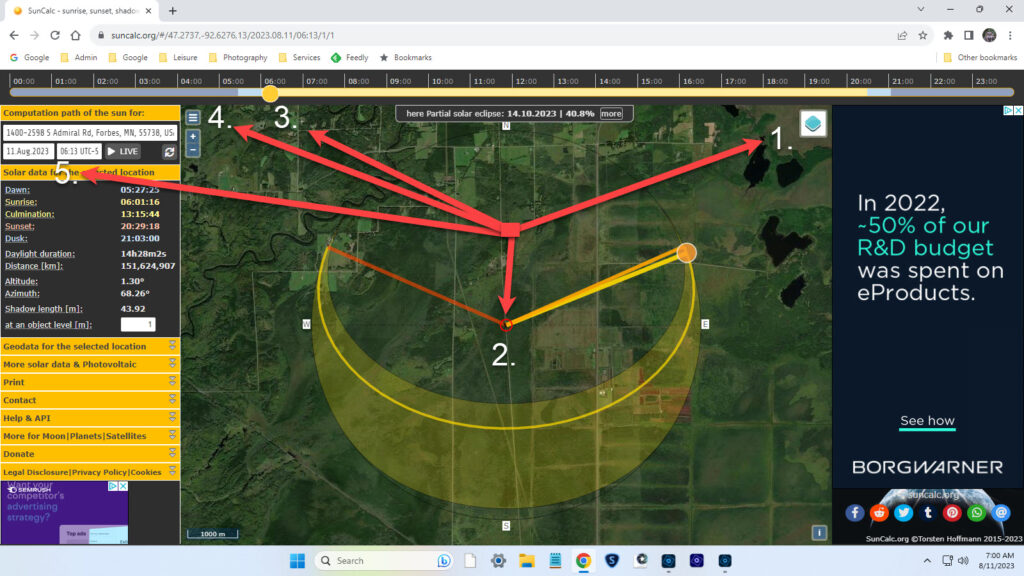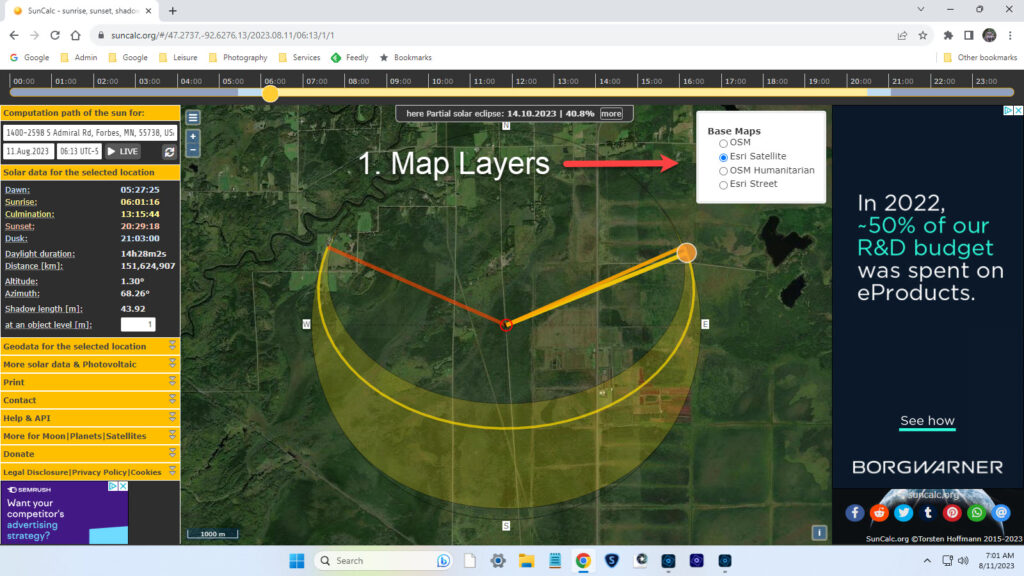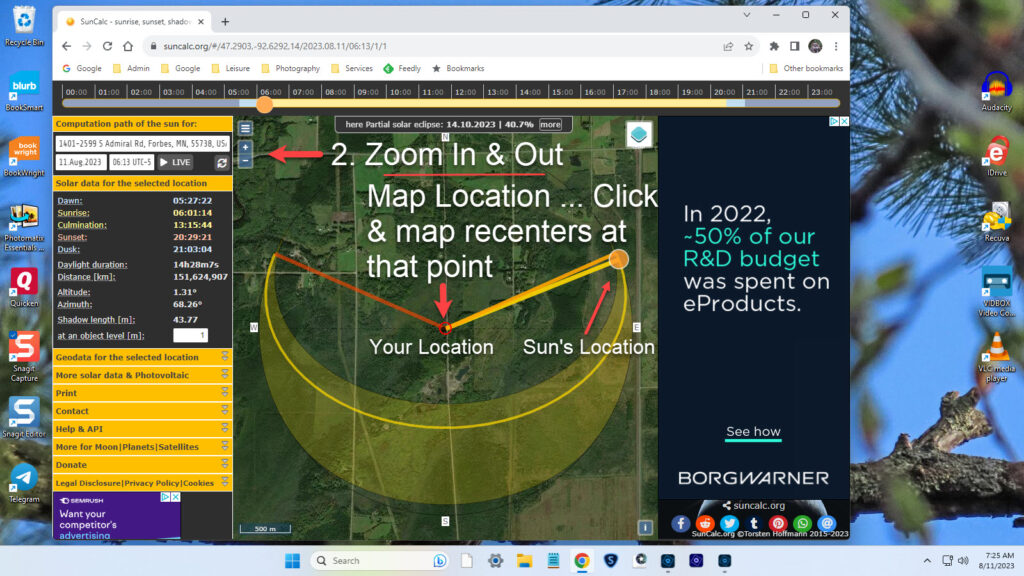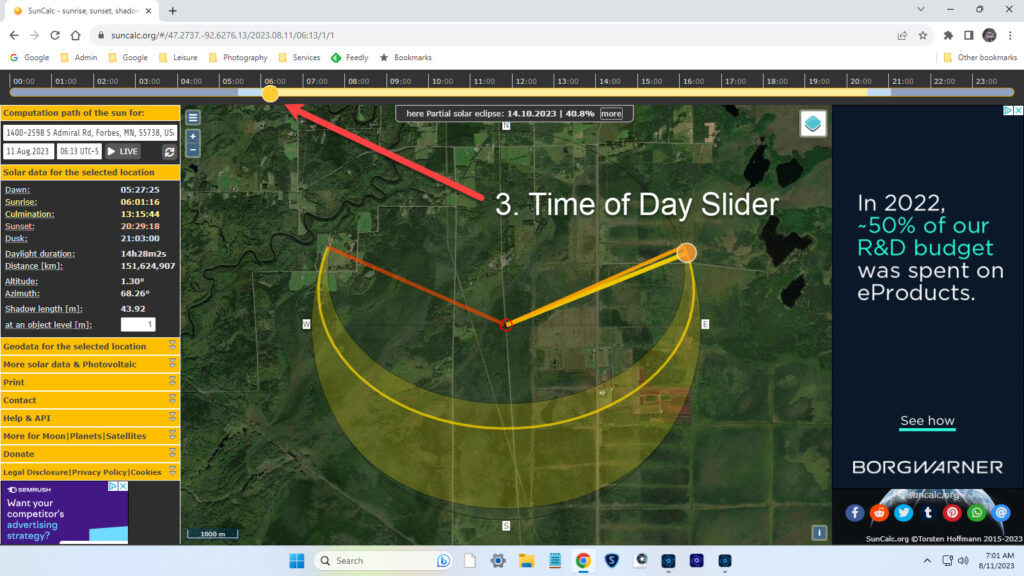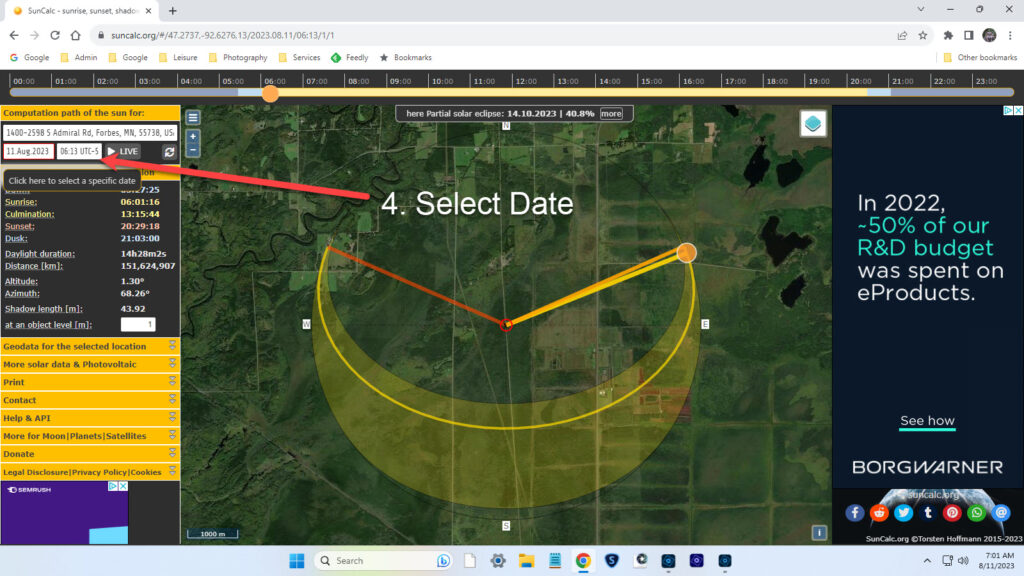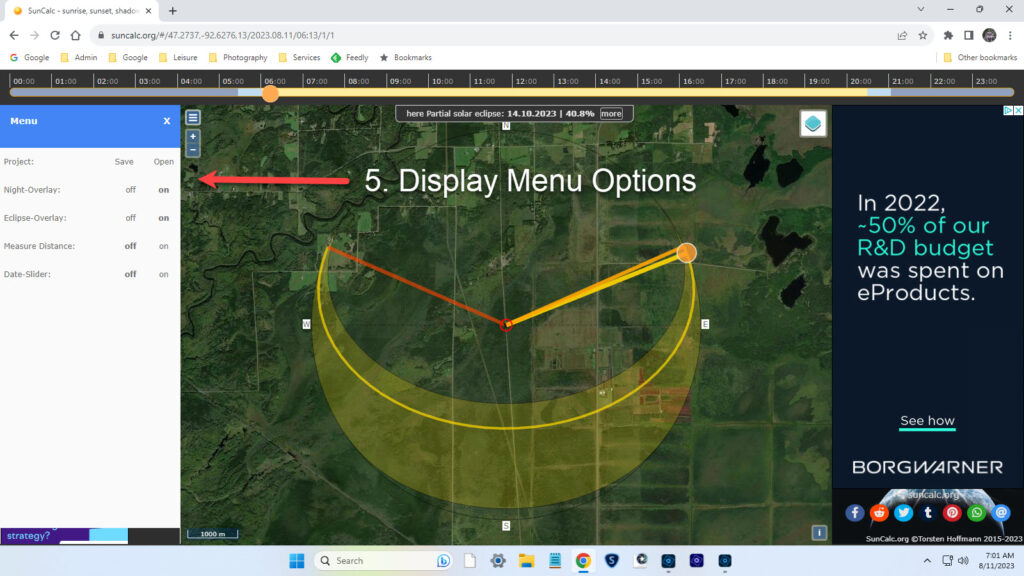The southern migration has started. The bug eating birds are exiting the Northwoods. No matter where you live in North America, it is possible to discover / learn what to expect in terms of the migration. For my purposes I am focusing upon northern Minnesota which equates to the Duluth area and St. Louis County. However, you can use the same approach for wherever you call home or are located.
BirdCast: Use this tool from the Cornell School of Ornithology (and others) on your computer or mobile device to learn what is happening in terms of migration over the next few days. Remember, a wind pushing birds in their desired direction, just like a tailwind on a bicycle, means more birds will be moving. We all like to use less energy to move the same distance. See my full review of BirdCast with annotated screenshots.
Here are two screenshots from BirdCast taken this Saturday morning, August 26th for the migration that occurred last night, and for two days hence when the winds will once again be out of the North for Duluth … located in St. Louis County, Minnesota.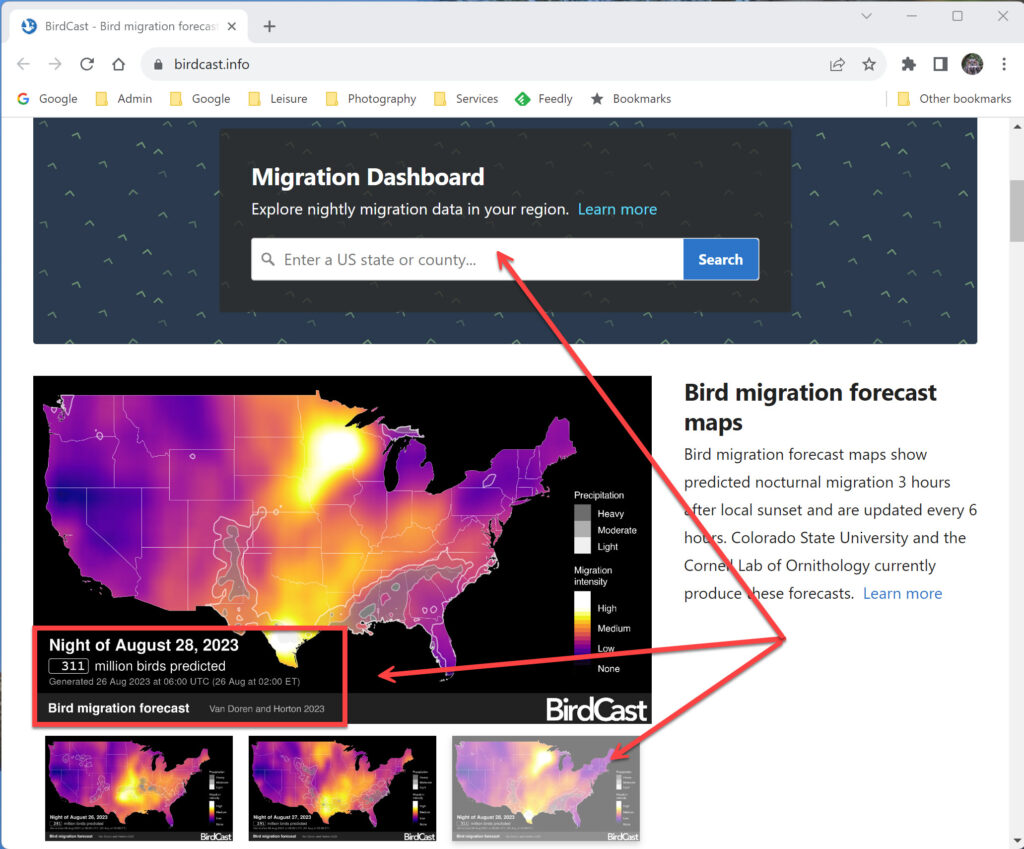
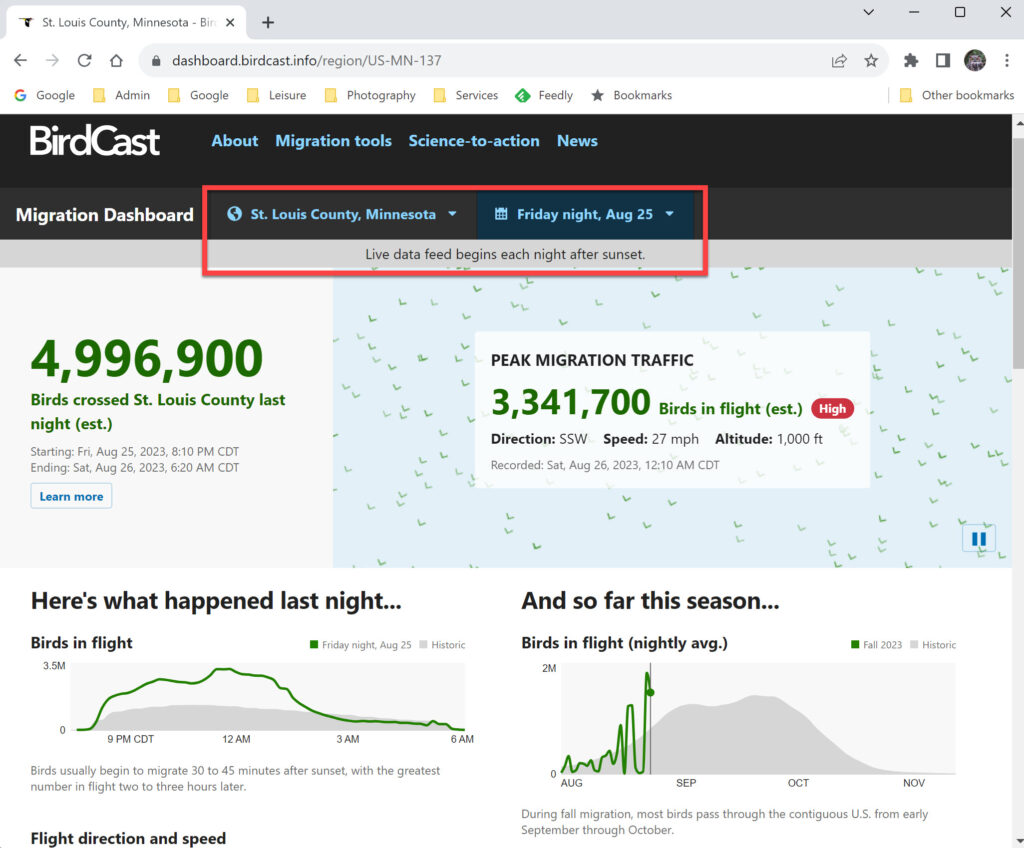
I also mention HaikuBox may be used to figure out what is migrating. Read my full review of HaikuBox, but remember this small box identifies the birds singing in your yard in real time and saves that data. As I mentioned in my full review, anyone may obtain a free HaikuBox account for use on a computer or mobile device and view the data from public HaikuBoxes across the United States and Canada. (Link to my own HaikuBox Data Stream)
The way to use HaikuBox for migration information is easy. Use the map on their website (Listen.Haikubox.Com) and pick Haikuboxes north of your own location and bookmark them. At any time, you may then visit those Haikuboxes and discover what ACTUAL birds are visiting the geographic locations in question.
Thus, I have chosen and bookmarked for my purposes and account four Haikuboxes … one in Grand Marais, Minnesota … two on the Gunflint Trail … and one box on Lake Winnipeg.
A Screenshot of the HaikuBox Map for my Region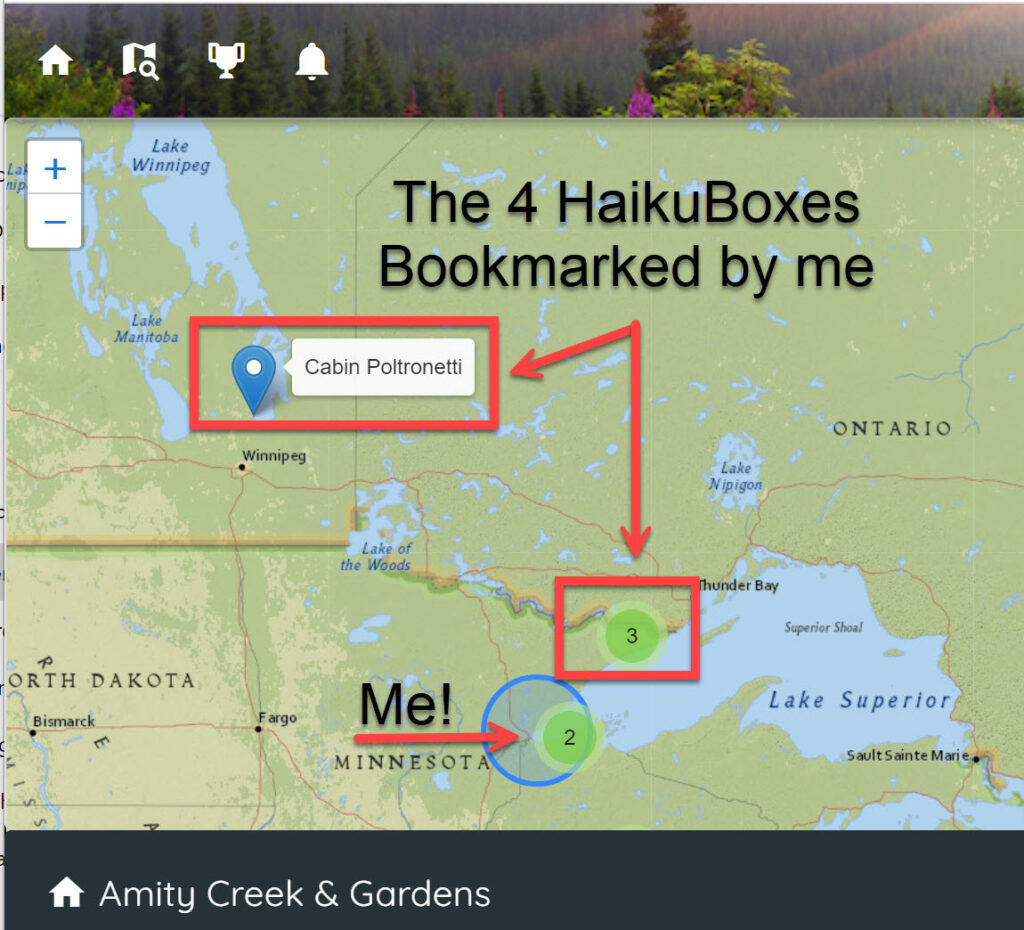
Using one’s free Haikubox Account … on a PC or Mobile Device … check what’s happening for a given period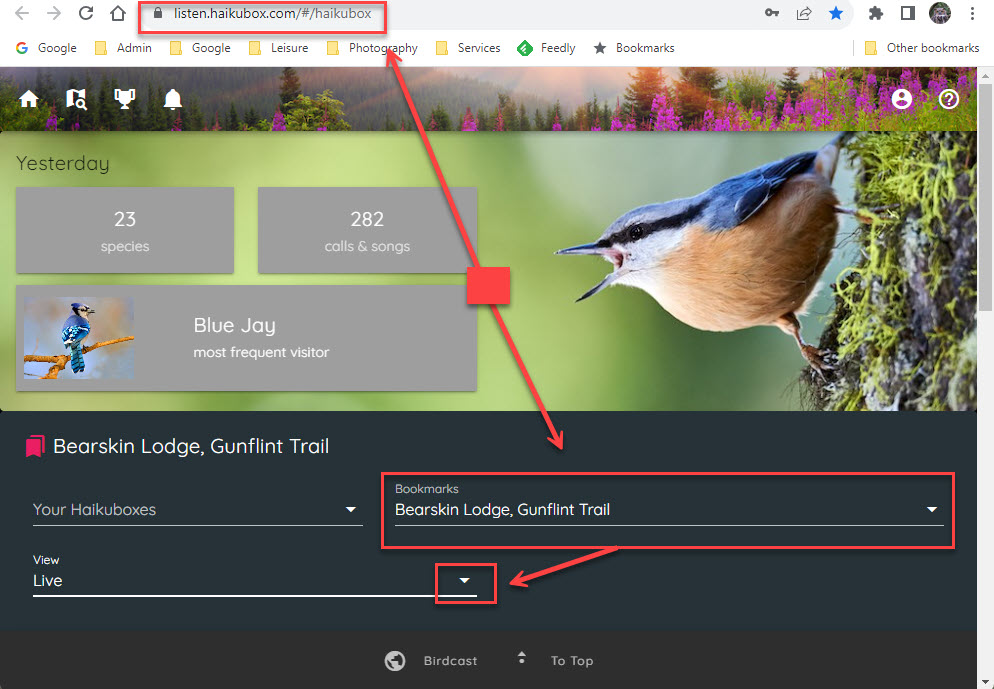
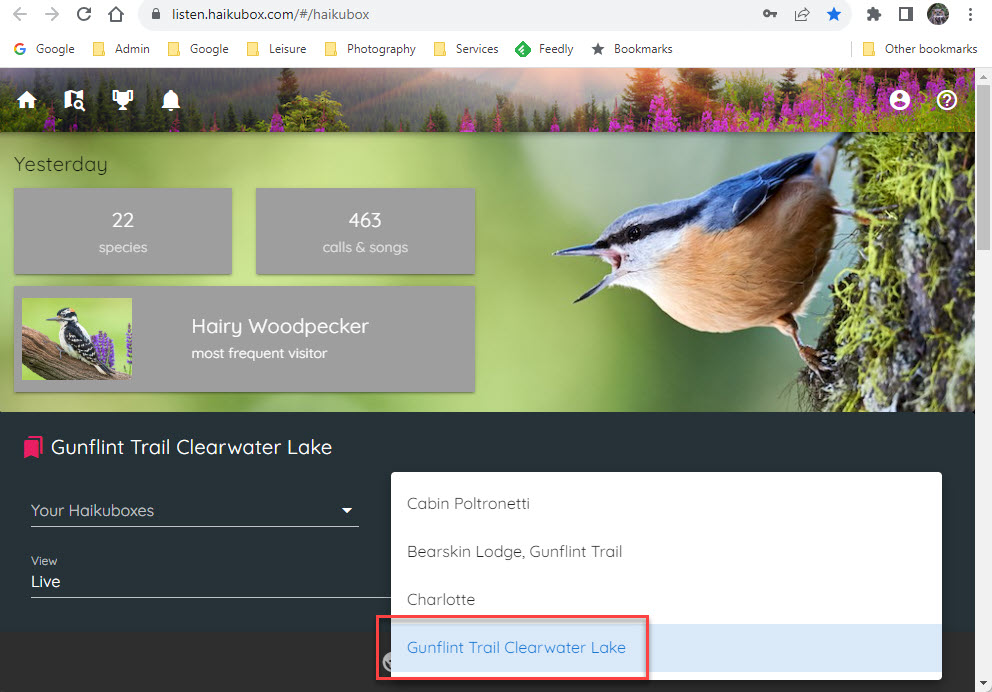
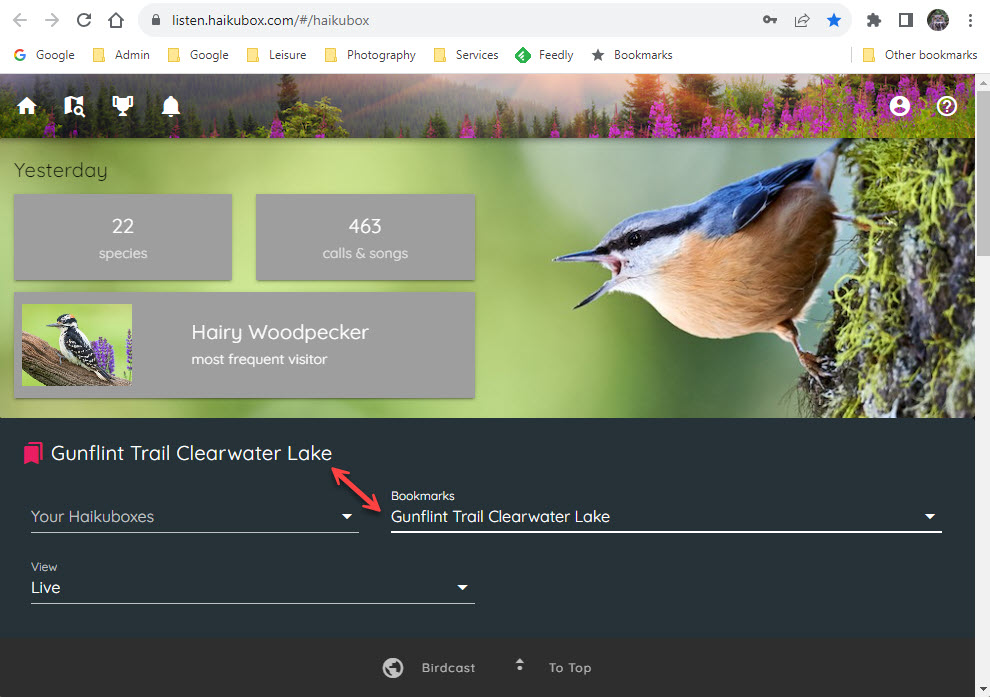
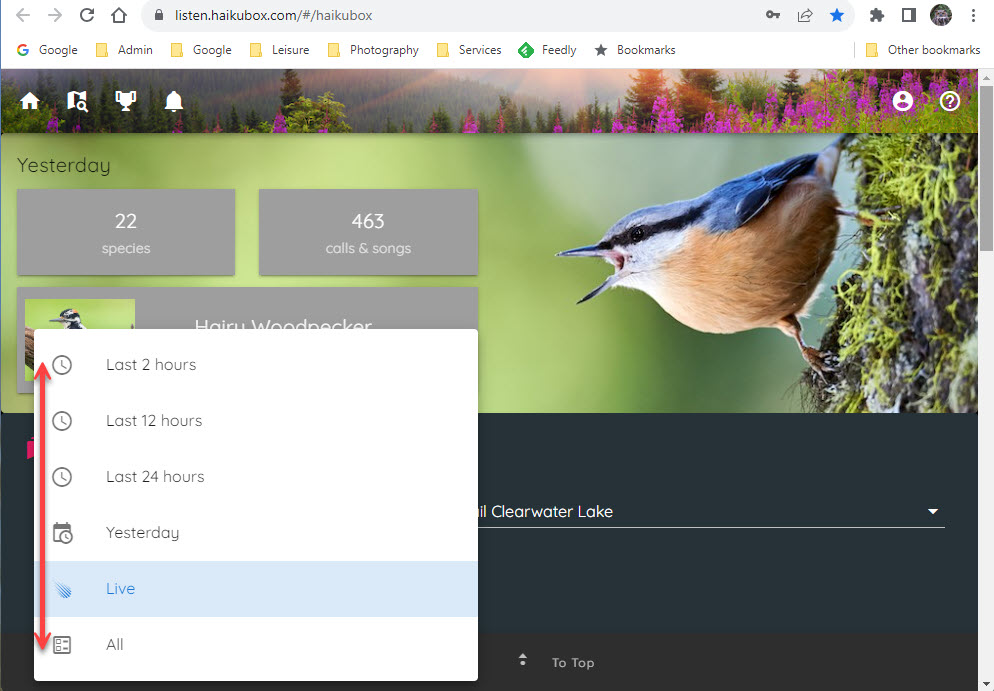
One final item in closing out this post. In my full review I talk about how I had purchased my own HaikuBox. However, a college classmate of mine, Jim Ancona, who is also a techie and a retired software engineer built the equivalent of his own Haikubox … a Do It Yourself (DIY) project. The cost is less that what I spent, and the result is similar! Read how Jim built his own bird listening device:
Here is a screenshot from Jim’s area and his Birdsong Device. 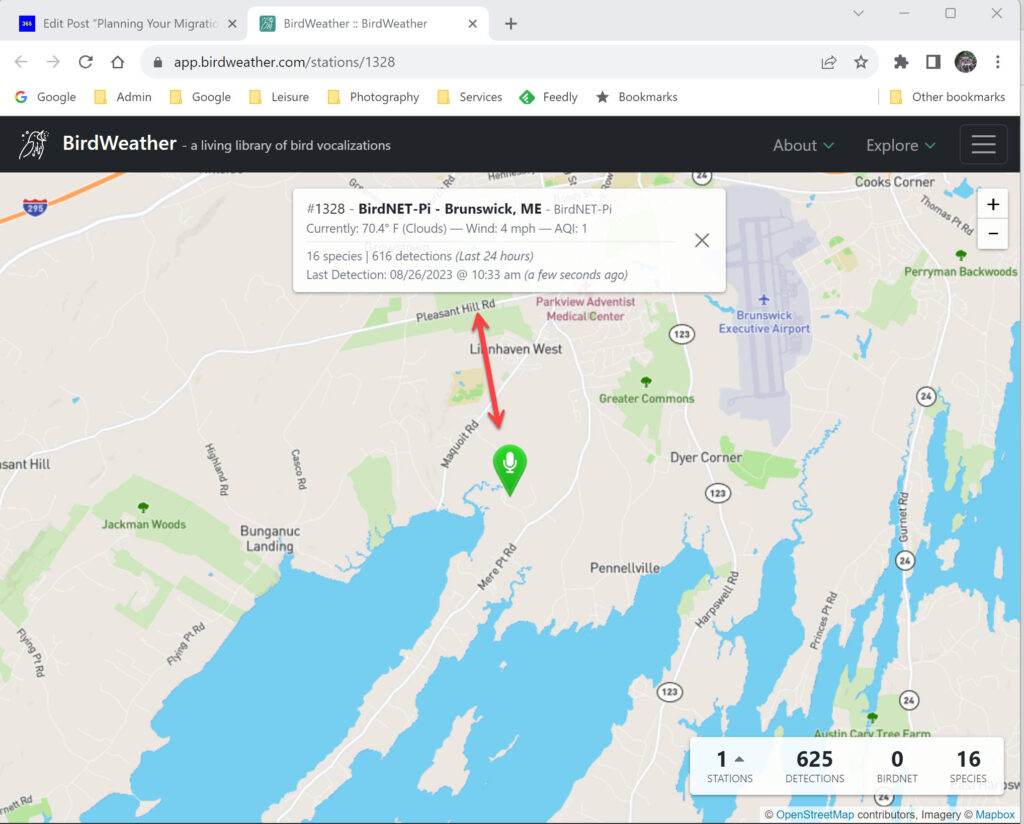
Finally a special callout to another one of my buddies, and I am throwing the gauntlet down. Paul with your amazing Wood Duck Drop monitoring tech, I totally expect you to follow in Jim’s footsteps!










